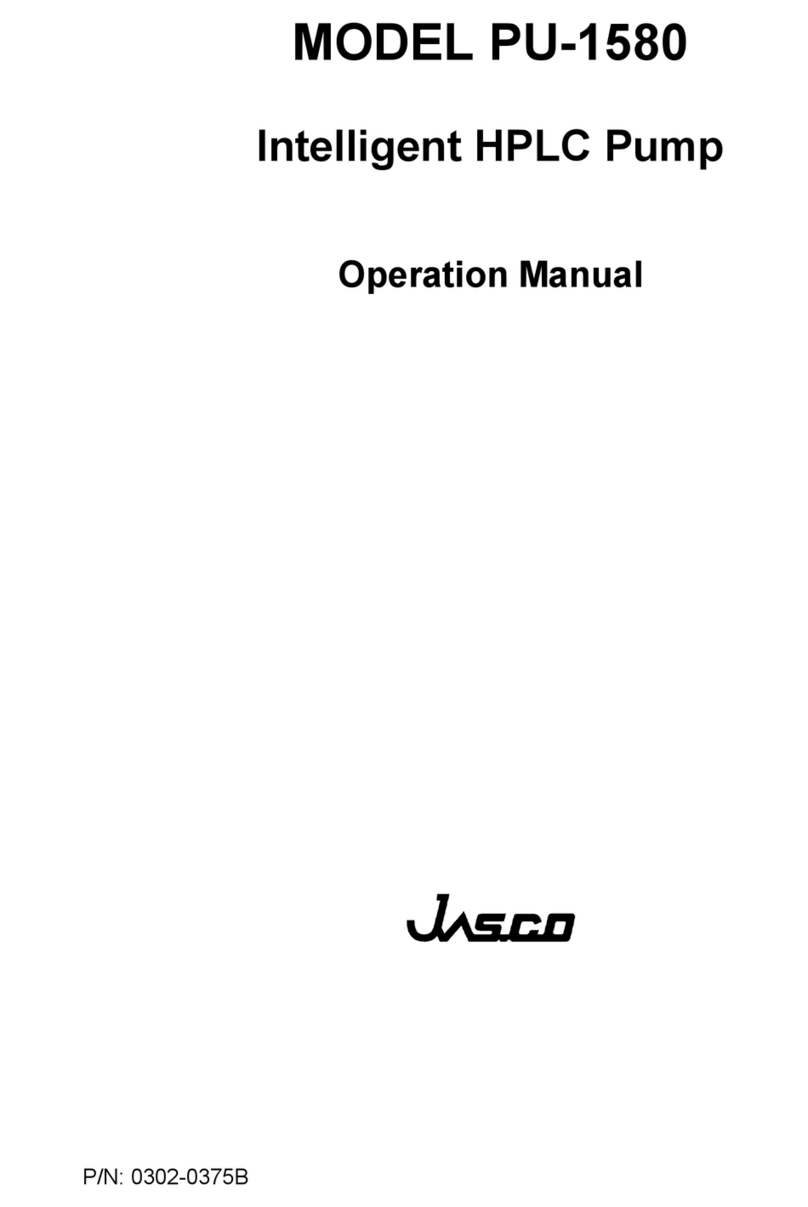
viii
2.4.6 Inlet tube fitting leaks.............................................................................. 16
3 Pump Inspection and Calibration ................................................17
3.1 Pressure tests (pressure ramp and holding tests) ................................... 17
3.1.1 Preparation ............................................................................................. 17
3.1.2 Pressure Test 1 (pressure ramp test) ..................................................... 17
3.1.3 Pressure Test 2 (pressure holding test).................................................. 18
3.2 Adjustment of Zero Pressure...................................................................... 18
3.2.1 Conditions under which adjustment is required ...................................... 18
3.2.2 Adjustment using the PRESS ZERO ADJ trimmer ................................. 18
3.3 Flow rate calibration.................................................................................... 19
3.3.1 Conditions under which the flow rate must be adjusted ......................... 19
3.3.2 Input method for the flow rate calibration value...................................... 20
3.3.3 Flow rate calibration: Step 1 (without back pressure)............................ 20
3.3.4 Flow rate calibration: Step 2 (with back pressure) ................................. 21
4 Maintenance ..................................................................................23
4.1 Air bubble removal ...................................................................................... 23
4.2 Pump solvent replacement ......................................................................... 24
4.2.1 Solvent replacement preparations.......................................................... 24
4.2.2 Replacing the solvent with water ............................................................ 25
4.2.3 Replacing the water with methanol......................................................... 26
4.2.4 Notes on solvent replacement ................................................................ 26
4.3 Cleaning using an acid or alkaline solution ............................................. 27
4.3.1 Conditions under which cleaning is required .......................................... 27
4.3.2 Acid and alkaline solution concentrations............................................... 27
4.3.3 Cleaning procedure ................................................................................ 28
5 Part Replacement and Operations Check ...................................30
5.1 Plunger seal replacement ........................................................................... 30
5.1.1 Plunger seal replacement preparations .................................................. 30
5.1.2 Plunger seal removal .............................................................................. 31
5.1.3 Plunger seal installation.......................................................................... 35
5.1.4 Pump head, solvent selection valve, and purge valve attachment ......... 36
5.1.5 Post-replacement verification ................................................................. 37
5.2 Line filter replacement................................................................................. 37
5.2.1 Check for line filter clogs......................................................................... 37
5.2.2 Line filter replacement procedure ........................................................... 38
5.2.3 Post-replacement verification ................................................................. 39
5.3 Inlet filter replacement................................................................................. 39
5.3.1 How to check for inlet filter clogs ............................................................ 39
5.3.2 Inlet filter replacement procedure ........................................................... 39
5.4 Pump head check valve assembly replacement ....................................... 40
5.4.1 Preparations for check valve assembly replacement.............................. 40
5.4.2 Check valve assembly replacement procedure ...................................... 41
5.4.3 Post-replacement verification ................................................................. 43




























